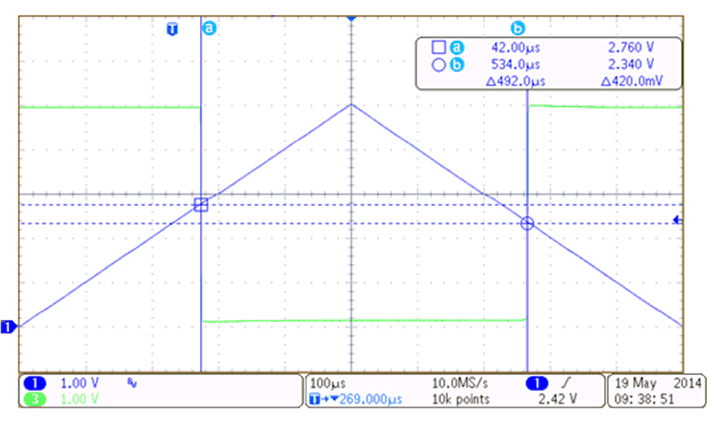SLOSE29B November 2018 – August 2024 TLV1704-SEP
PRODUCTION DATA
- 1
- 1 Features
- 2 Applications
- 3 Description
- 4 Pin Configuration and Functions
- 5 Specifications
- 6 Detailed Description
- 7 Application and Implementation
- 8 Device and Documentation Support
- 9 Revision History
- 10Mechanical, Packaging, and Orderable Information
Package Options
Mechanical Data (Package|Pins)
- PW|14
Thermal pad, mechanical data (Package|Pins)
Orderable Information
7.2.3 Application Curve
Figure 7-2 shows the upper and lower thresholds for hysteresis. The upper threshold is 2.76V and the lower threshold is 2.34V, both of which are close to the design target.
 Figure 7-2 TLV1701 Upper and Lower Threshold With Hysteresis
Figure 7-2 TLV1701 Upper and Lower Threshold With Hysteresis